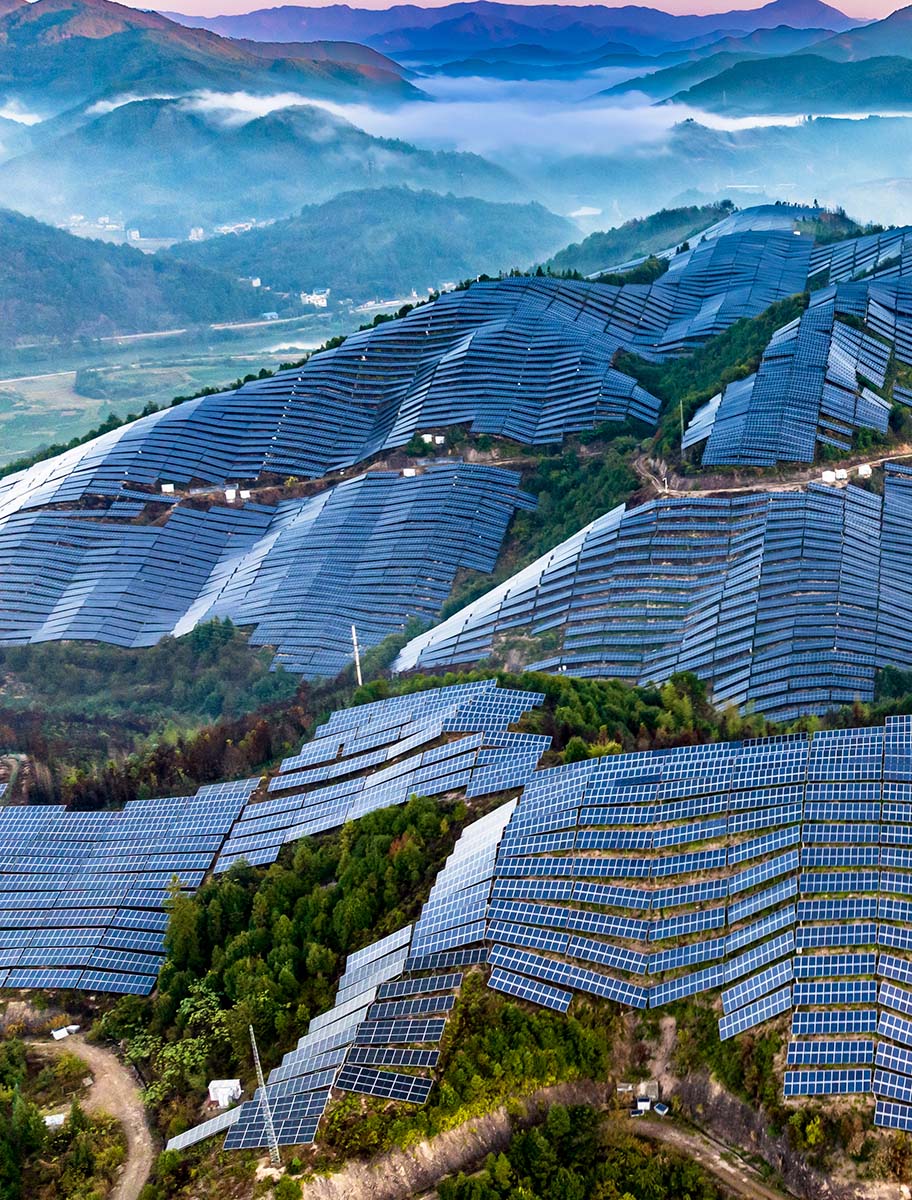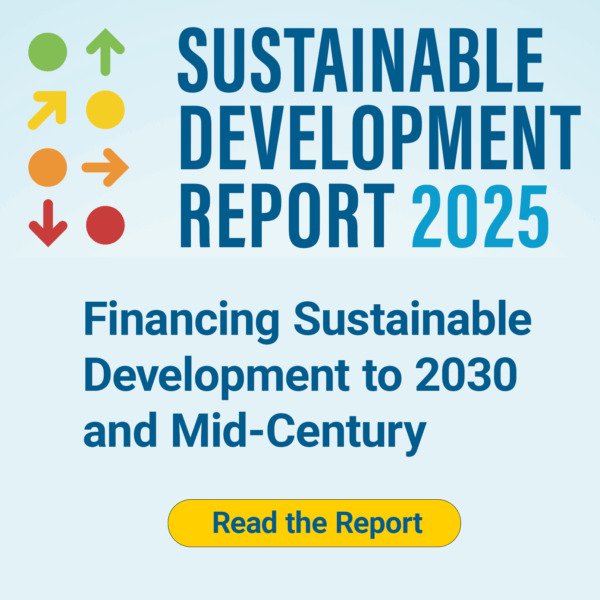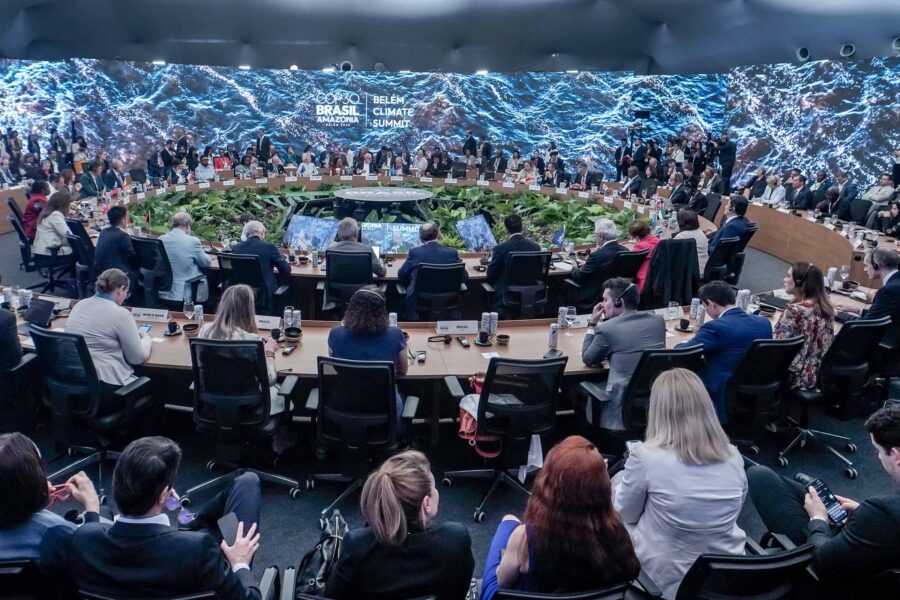Nature loss: the economic crisis hiding in plain sight
Climate change dominates global attention, but the destruction of nature is quietly setting up its own economic shockwave. With COP30 spotlighting the rising economic costs of nature loss, the case for treating it as an urgent financial and development priority has never been clearer
Climate — Global

As COP30 takes place in Brazil, the global community must increase its focus on the interlinked and equally urgent problem of nature loss. That’s because, first of all, the science shows it will be impossible to deliver our climate goals without tackling it. Around a third of carbon emissions are linked to nature loss associated with land-use change, such as deforestation. Secondly, protecting and restoring nature can be a major part of the solution to climate change – by cost-effectively facilitating carbon sequestration and by helping countries adapt to climate change and build resilience to the challenges it will bring.
But it’s also crucial because, as mounting evidence shows, the destruction of our natural environment independently poses significant threats to our economy, financial stability, health, and ability to thrive on this planet. These threats are on a par with – and inextricably linked to – climate change. Thus, the interlinked crises of climate change and nature loss demand integrated strategies, as isolated approaches are fiscally inefficient and insufficient to meet sustainability goals.
Why nature loss is as urgent as climate change
Nature and biodiversity are declining at unprecedented and accelerating levels, with species going extinct up to 1,000 times faster than the natural background rate. With over half of global gross domestic product (GDP) – USD 44 trillion – moderately or highly dependent on nature (and the whole economy ultimately dependent on nature), the World Economic Forum’s Global Risks Report 2025 identifies nature loss, along with climate change, as part of the top four global risks over the next 10 years. The economic costs of unsustainable practices in food, land, and ocean use are now estimated at USD 12 trillion, exceeding their contribution to global GDP.
Yet governments often perpetuate this crisis at great cost to themselves, by subsidizing activities that harm nature and undermine economic prospects – amounting to as much as USD 4 to 6 trillion annually – while lacking frameworks to protect the global natural assets we all depend on, like oceans and rainforests.
That is why WWF published a Global Roadmap for a Nature-Positive Economy last year, discussing how to incorporate nature-related risks more centrally into global economic and financial policy frameworks.
It highlights how there has been very limited progress to date on reforming global financial regulatory frameworks to align financial flows with globally agreed nature-recovery goals – something the Financial Stability Board itself concluded in the Stocktake on Nature-related Risks it produced for the G20 last year.
The roadmap also talks about how the mandates and strategies of multilateral development banks (MDBs) could be shifted to more explicitly address nature-related risks and impacts alongside climate change, as a crucial part of delivering the Sustainable Development Goals and building economic resilience. It sets out how these considerations can be integrated into MDBs’ investment decision-making processes, and the important role they can play in supporting countries to develop nature-positive growth pathways and establish beneficial economic and fiscal reforms.
Transformative economic opportunities also exist: systemic nature-related shifts in food systems, land and ocean use, the built environment, and energy sectors could unlock USD 10 trillion in annual business opportunities and create 395 million jobs by 2030. Other estimates suggest that a sustainable bioeconomy model – one that focuses on the sustainable use of natural resources – could generate enormous opportunities, with projections for it to reach USD 30 trillion by 2050.
Incorporating nature into economic and financial policymaking frameworks is both an ethical imperative and an economic necessity. As recognized by the Coalition of Finance Ministers for Climate Action: “The global economy is embedded in nature, as it is profoundly dependent – and has a profound impact – on nature, placing nature loss squarely in the realm of economic decision-makers.”
To reverse biodiversity loss, we must build a nature-positive economy – an economy that results in increasing levels of nature over time, disincentivizes the overexploitation of natural systems, and operates within planetary boundaries.
Areas for action
WWF’s roadmap discusses five key areas of action.
Pillar One: nature-positive transition pathways
Pillar One focuses on the need for nature-positive transition pathways to guide actors on what the shift to a nature-positive economy should look like.
Valuable progress is being made on this – for example, by the World Business Council for Sustainable Development, World Economic Forum, and Business for Nature, who have defined sectoral nature-positive pathways for several key sectors. But further government action is needed to facilitate the development of pathways to deliver national nature goals, as is being kicked off now in the UK.
Pillar Two: data and metrics
Pillar Two focuses on data and metrics, with key disclosure guidelines having been developed by the Taskforce on Nature-related Financial Disclosures.
However, the global community’s efforts across these first two pillars have largely centered on voluntary corporate action. While this represents a valuable first step, it is insufficient for achieving a global nature-positive economy, where more government-endorsed frameworks and enabling policies are needed to support, incentivize, and mandate the transition for the private sector.
Pillar Three: private capital markets
Pillar Three looks at shifting private capital, where most discussion has to date focused on closing the financing gap for biodiversity, scaling private capital for investment in nature, and the need to develop and implement innovative financing mechanisms – although much work remains to be done in those areas.
However, there has been even less progress on reforming global financial regulatory frameworks to align financial flows with nature-positive goals, particularly by shifting mainstream private capital away from nature-degrading economic activities.
Pillar Four: international financial institutions
Pillar Four focuses on the role of international financial institutions and development finance institutions, and public finance more broadly. This is particularly crucial for nature-rich developing countries that may face challenges in accessing private capital.
There is significant scope for these institutions to better support countries in shaping nature-positive development strategies.
Pillar Five: trade and the global commons
Finally, Pillar Five discusses trade issues and governance of the global commons. This area needs much more attention, particularly as trade rules may directly or indirectly penalize countries for setting higher environmental standards. Reform must be managed carefully to avoid inequitable economic and social impacts.
The roadmap contains more detailed discussion of each pillar and practical ways to address them.
From risk to opportunity: building a nature-positive economy
The loss of nature poses major economic risks and costs, but reshaping economic incentives will create investment opportunities in nature-positive production, consumption, and sustainable development pathways.
A nature-positive economy should also bring more equitable rewards to stewards of natural capital for managing resources sustainably, and build resilience to future economic challenges posed by climate change and biodiversity loss.
Featured in:
Climate Action edition 2025
Beyond the disappointing headlines from COP30, progress is still being made on climate action. Even without the roadmap for the phaseout of fossil fuels making it into the conference's final statement, fossil fuels are on their way out. Renewables have already reached the tipping point where they are commercially more attractive than fossil-fuel alternatives - momentum for the transition will start to gather pace.
This edition picks up on themes from the latest COP: systems transformation, human dimensions and planetary stewardship.
Authors include: Yamide Dagnet, Emi Minghui, Selen Inal, Jumpei Takami, Bilel Jamoussi, Karen Ellis, Mohamad Ansarin, Diana Denke, Juan Lucas Restrepo, Beatrice Mosello, Alexandra Steinkraus, Mauricio Voivodic, Meghna Das, Mariana Matoso, Bernardo Arce and Mia Calle.
Publication date: 26 November 2025







